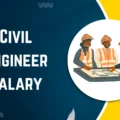Visa Sponsorship for Civil Engineers: H1B vs. EU Blue Card vs. Australia 491 (2025 Guide)

Visa Sponsorship Engineers, The world is racing to build smarter cities, climate-resilient infrastructure, and renewable energy grids—and civil engineers are at the heart of this transformation. But crossing borders to join these projects isn’t just about skills; it’s about navigating complex visa systems. By 2025, the US, EU, and Australia will face a combined shortage of 400,000+ engineers (OECD, 2023), making visa sponsorship a golden ticket for global talent.
The catch? Each region’s visa program has unique hurdles. The US H1B lottery accepts just 18% of applicants, while the EU Blue Card offers faster permanent residency (PR) for skilled professionals. Australia’s Subclass 491 visa, meanwhile, lures engineers to regional mining hubs with PR pathways—but requires a 3-year regional commitment.
This guide cuts through the confusion, comparing 2025’s top visa options for civil engineers. You’ll learn which countries offer the fastest PR, which pay the highest salaries, and how skills like BIM (Revit) or GIS mapping can make you a stronger candidate.
Why Visa Sponsorship Engineers Are in Demand
Global infrastructure spending will hit $9 trillion annually by 2025, with the US, EU, and Australia leading mega-projects like offshore wind farms, smart highways, and flood defenses. But aging workforces and skill gaps are forcing these regions to recruit globally:
-
USA: Needs 82,000+ civil engineers for IIJA-funded projects (ASCE, 2024).
-
EU: Requires 250,000 engineers to meet Green Deal targets (European Commission).
-
Australia: Faces a 40,000-engineer shortfall in mining and renewables (Engineers Australia).
Visa sponsorship isn’t just a perk—it’s a necessity. Here’s how the top programs compare.
USA H1B Visa: High Risk, High Reward. Visa Sponsorship Engineers
Eligibility
-
Job Offer: From a US employer willing to sponsor.
-
Education: Bachelor’s degree (or equivalent) in civil engineering.
-
Salary: Must meet DOL’s prevailing wage (e.g., $85,000+ for mid-level roles).
Process
-
Employer files H1B petition (March 2025 lottery).
-
If selected, USCIS reviews application (3–6 months).
-
Visa granted for 3 years (extendable to 6).
Pros
-
High Salaries: Avg. US civil engineer salary: $110,000 (BLS, 2025).
-
Path to Green Card: Employers can sponsor EB-2/EB-3 visas.
Cons
-
Lottery Odds: 18% chance in 2025 (USCIS).
-
Job Lock: Changing employers requires re-sponsorship.
Software Skills in Demand:
-
AutoCAD Civil 3D (transportation projects).
-
STAAD.Pro (structural analysis for PE licensure).
EU Blue Card: Fast Track to Europe. Visa Sponsorship Engineers
Eligibility
-
Job Offer: Minimum 1-year contract in an EU country.
-
Salary: ≥ 1.5x national average (e.g., €58,400 in Germany).
-
Education: Accredited civil engineering degree.
Process
-
Secure a job in Germany, France, or Nordic countries (high demand).
-
Employer submits Blue Card application (3–4 weeks processing).
-
PR eligibility after 21–33 months (with B1 language skills).
Pros
-
Work-Life Balance: 30+ vacation days, 35-hour workweeks (common in EU).
-
Family Inclusion: Spouses can work immediately.
Cons
-
Salary Thresholds: Steep in high-cost countries like Denmark.
-
Language Barriers: PR requires local language proficiency.
Software Skills in Demand:
-
Allplan (German BIM software).
-
SAP2000 (EU infrastructure standards).
Australia Subclass 491 Visa: Regional Opportunities. Visa Sponsorship Engineers
Eligibility
-
Occupation List: Civil Engineer (ANZSCO 233211).
-
Points Test: 65+ points (age, English, experience).
-
Nomination: By an Australian state/territory (e.g., Western Australia).
Process
-
Submit Expression of Interest (EOI) via Skill Select.
-
Receive state nomination (priority for regional skills shortages).
-
Apply for visa (8–12 months processing).
Pros
-
PR Pathway: Eligible after 3 years in regional areas (e.g., Queensland mining towns).
-
Salary Premiums: FIFO roles in mining pay AU150,000–AU150,000–AU220,000.
Cons
-
Regional Commitment: Must live/work in designated areas for 3 years.
-
Limited Job Mobility: Requires state approval to change employers.
Software Skills in Demand:
-
12d Model (mining/water projects).
-
Plaxis (geotech for coastal resilience).
Key Comparison: H1B vs. Blue Card vs. 491
| Factor | USA H1B | EU Blue Card | Australia 491 |
|---|---|---|---|
| PR Timeline | 6–10 years | 21–33 months | 3 years |
| Avg. Salary | 85,000–85,000–150,000 | €55,000–€90,000 | AU110,000–AU110,000–AU220,000 |
| Job Mobility | Low (employer-tied) | Moderate (EU-wide) | Low (regional lock) |
| Language Requirements | None | B1 for PR | Competent English |

4 Must-Read Books for Visa Applicants
-
“The Infrastructural City” by Kazys Varnelis
-
Why Read?: Align with US/EU smart city trends.
-
-
“Engineers’ Guide to Technical Employment” by Richard Shelton
-
Why Read?: Ace visa-sponsored job interviews.
-
-
“BIM for Dummies” by Stefan Mordue
-
Why Read?: Master EU/AU BIM standards.
-
How to Choose the Right Visa
-
Prioritize PR?
-
EU Blue Card: Fastest PR (under 3 years).
-
Australia 491: Regional PR pathway with high salaries.
-
-
Chase High Salaries?
-
USA H1B: Top pay but visa uncertainty.
-
Australia 491: Mining sector premiums.
-
-
Value Work-Life Balance?
-
EU Blue Card: Shorter hours, ample vacation.
-
Action Plan: Boost Your Visa Chances
-
Target High-Demand Skills:
-
Learn Revit for EU roles or 12d Model for Australia.
-
Get certified in LEED (US) or BIM ISO 19650 (EU).
-
-
Network Strategically:
-
Join LinkedIn groups like “Global Civil Engineers” or “Visa-Sponsored Jobs”.
-
Attend virtual career fairs hosted by AECOM (US) or CIMIC Group (AU).
-
-
Prepare Financially:
-
Save 5,000–5,000–10,000 for visa fees and relocation.
-
Ready to Apply?
-
Research job openings on EURES.
-
Consult immigration lawyers via platforms like Visa Envoy (AU).
References:
-
USCIS H1B Data: https://www.uscis.gov
-
EU Blue Card Guide: https://ec.europa.eu/immigration
-
Australia Subclass 491: https://immi.homeaffairs.gov.au
-
Engineers Australia Demand Forecast: https://www.engineersaustralia.org.au



